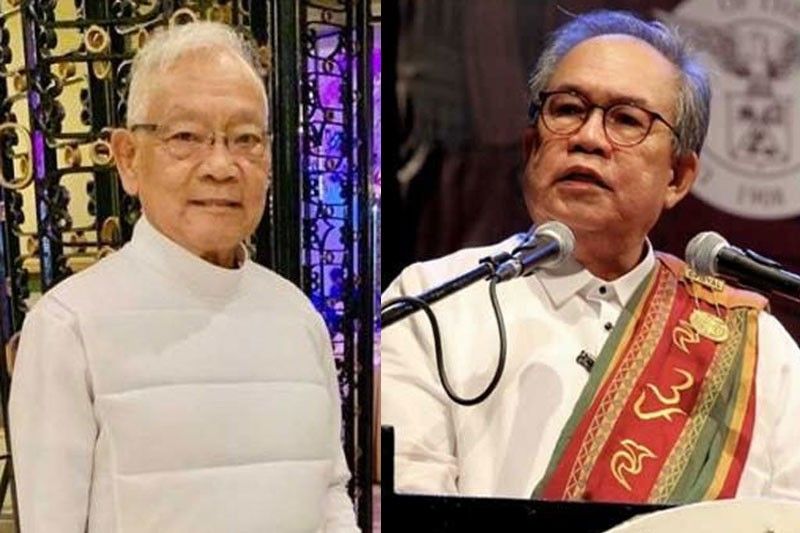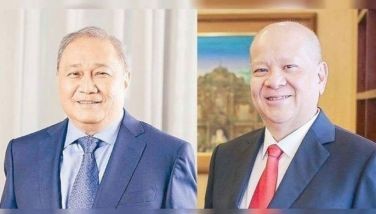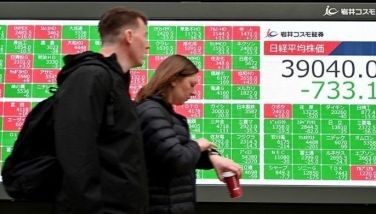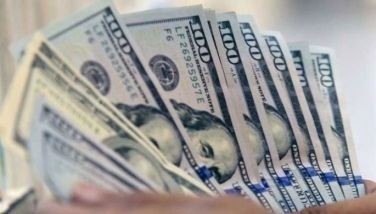Iconic Filipinos: Jaime C. Laya and Jose Y. Dalisay Jr.


Two Filipinos of great renown celebrated personal milestones in January this year. Their careers flowered as professors at the University of the Philippines at different times.
In paying tribute to them, I also take personal pleasure in having intersected with their lives in a meaningful way.
Jimmy Laya entered his 80th year of life. Welcome to really old age!
Butch Dalisay formally retired as professor of literature at the UP. He is a Filipino writer with a distinguished body of work. Welcome to more writing freedom!
I missed Jimmy’s celebration of life and friendship at the Manila Hotel because of schedule conflict. But I was able to attend and even speak at Butch’s retirement program held at the residence of the UP President recently.
Jaime C. Laya
Jimmy trained professionally in accounting and finance. He was finance professor and former (and youngest) dean of UP Business Administration; formerly central bank governor, budget minister; education minister, and chair of the National Commission for Culture and the Arts (NCCA).
Today, he is more known in the field of Philippine art and culture and in historical circles. He was the spark that led to the restoration of Intramuros in the 1980s.
When I became the director general of the NEDA, I invited him to join me as my deputy in 1974. His support of work at NEDA brought him immediate fame and respect among colleagues in government. Former central bank governor Gregorio Licaros asked to share his services with NEDA and so he became as well deputy central bank governor.
President Ferdinand Marcos elevated him to become the minister (secretary) of the budget, where he introduced major budget reforms.
In the early 1980s, he succeeded to the governorship of the central bank when the position became vacant. That was bad timing. The country entered a period of serious political and economic crisis and hardship. No amount of good work could obliterate the fact that the problem was to manage a bad crisis that lingered on.
He would be made minister of education after his central bank stint. After government service, Jimmy Laya founded an accounting firm that would become a major force in the industry. In the late 1990s, he would be called back to government to become chairman of the NCCA, the new national commission on the arts and culture.
His highly technical work in the government did not deter him from simultaneously taking time to indulge and foster a second passion: to provide enduring support for the arts and Filipino artists. At the central bank, he initiated investment in the nation’s arts, thereby also uplifting the nation’s artists.
His column in the Manila Bulletin, entitled Wala lang (literally, trivia but, figuratively, purposefully useful and memorable), deals with history, arts, culture, lore, tradition and diverse subjects. His wit, brevity, as well as great insight into the nation’s soul reveals much about the extensiveness of his life’s interests.
His columns have been collected in three volumes, beautifully produced that are a joy to share with others.
Jimmy was the among the youngest in the class of 1953 of Arellano High School. Jimmy and I, and my then future wife Loretta, were public high school classmates.
Jimmy was the precociously bright student in our class along with two other young classmates. These three boys uniquely all wore short pants almost until the time of graduation in 1953. Being three years older than Jimmy, I remember this well. (Entering school, I was delayed by the war years.)
Jimmy’s parents were public school educators. This must explain Jimmy’s broader sensitivity to the arts, to history, to things pertaining to country. His father, Juan C. Laya, the writer-educator, was a rising public education official when he met a tragic road accident. Silvina Laya, his mother who would carry on to raise the family, would become a superintendent in the public school system.
At the UP, both Jimmy and I were again cohorts as students and then as young career instructors. He enrolled in business administration and finished accounting, becoming a CPA early in life. I went to the college of liberal arts.
In the late ’50s, we became instructors in the college of business where we taught Economics together. Then the university sent us to graduate school studies as part of the faculty’s development program. He went to Georgia Tech for an MBA and, later, for a PhD at Stanford University.
Jose Y. Dalisay Jr.
Butch Dalisay, as he is familiarly known, is a creative writer, professor of literature, and vice president for public affairs at UP.
At a young age, Butch became a well-known Palanca awardee in several categories of literature.
Among his works are plays, screenplays, short stories, and novels. Butch Dalisay is principally a Filipino creative writer in English and Filipino. His latest novel, Soledad’s Sister, is about the tragicomic story of Filipinos in the age of globalization.
He is also an acclaimed biographer. He has written on the lives of Washington SyCip and Edgardo Angara Jr., on the one hand, and those of the Jose Lava family (of the communist rebels) and of Rodolfo Cuenca (business crony during martial law). He also collaborated on the text of a book of photographs by Jaime Zobel de Ayala.
In 1974, Butch Dalisay, just out of prison from his student activist days at UP, met my press liaison officer at NEDA, Jun Medina, along Padre Faura St. They were both previously cub reporters at the Philippines Herald. Jun was looking for writers to help him in development communications, and Butch was looking for a job.
I asked for specimens of his writing, found out how good he was. I offered him a job. This was a major event for him in more ways than one. He soon proposed marriage to his girlfriend, Beng.
His experience at NEDA rescued him from want and indirection, gave his life new guideposts, and awakened his deep interest in formal studies.
At NEDA, I made sure he trained in certificate in development economics (at the UP- School of Economics) to understand the language of development. That taught him also economics and how to write on economic issues better.
Later, his interest in formal learning would take him back to the UP to finish his studies, though much delayed. But that also led him to further study for the PhD in literature, at the University of Wisconsin, Madison.
For him and for creative writing at the UP, the rest is history.
My email is: [email protected]. For archives of previous Crossroads essays, go to: www.philstar.com/authors/1336383/gerardo-p-sicat. Visit this site for more information, feedback and commentary: http://econ.upd.edu.ph/gpsicat/
- Latest
- Trending

























